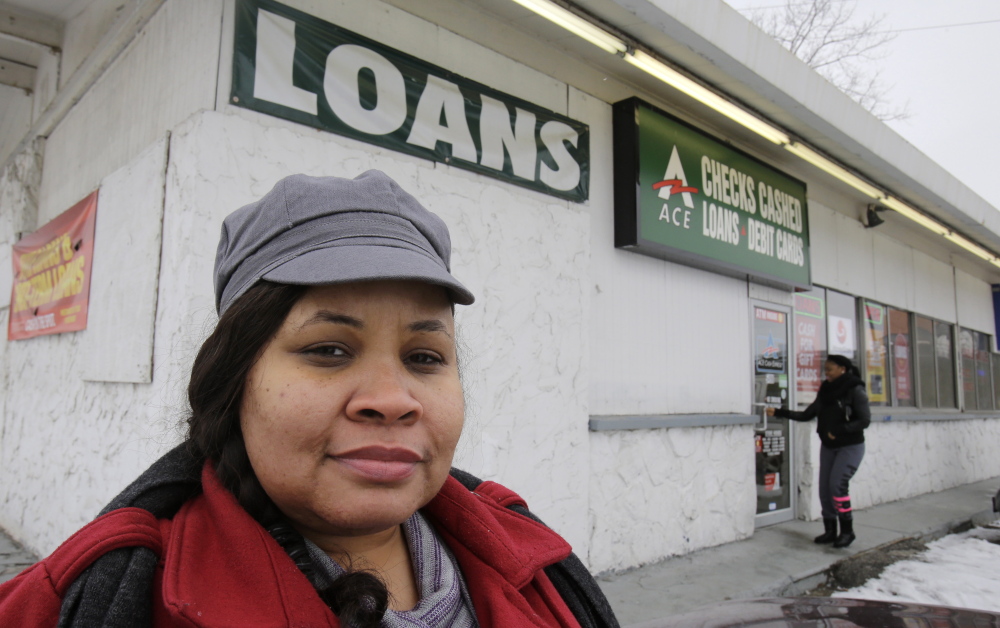WASHINGTON — Troubled by consumer complaints and loopholes in state laws, federal regulators are putting together the first-ever rules on payday loans aimed at helping cash-strapped borrowers avoid falling into a cycle of high-rate debt.
The Consumer Financial Protection Bureau says state laws governing the $46 billion payday lending industry often fall short, and that fuller disclosures of the interest and fees – often an annual percentage rate of 300 percent or more – may be needed.
Full details of the proposed rules, expected early this year, would mark the first time the agency has used the authority it was given under the 2010 Dodd-Frank law to regulate payday loans. In recent months, it has tried to step up enforcement, including a $10 million settlement with ACE Cash Express after accusing the payday lender of harassing borrowers to collect debts and take out multiple loans.
A payday loan, or a cash advance, is generally $500 or less. Borrowers provide a personal check dated on their next payday for the full balance or give the lender permission to debit their bank accounts. The total includes charges often ranging from $15 to $30 per $100 borrowed. Interest-only payments, sometimes referred to as “rollovers,” are common.
Legislators in Ohio, Louisiana and South Dakota unsuccessfully tried to broadly restrict the high-cost loans in recent months. According to the Consumer Federation of America, 32 states now permit payday loans at triple-digit interest rates, or with no rate cap at all.
The bureau isn’t allowed under the law to cap interest rates, but it can deem industry practices unfair, deceptive or abusive to consumers.
“Our research has found that what is supposed to be a short-term emergency loan can turn into a long-term and expensive debt trap,” said David Silberman, the bureau’s associate director for research, markets and regulation. The bureau found more than 80 percent of payday loans are rolled over or followed by another loan within 14 days; half of all payday loans are in a sequence at least 10 loans long.
The agency is considering options that include establishing tighter rules to ensure a consumer has the ability to repay. That could mean requiring credit checks, placing caps on the number of times a borrower can draw credit or finding ways to encourage lower rates.
Payday lenders say they fill a vital need for people who hit a rough financial patch. They want a more equal playing field of rules for both nonbanks and banks, including the way the annual percentage rate is figured.
“We offer a service that, if managed correctly, can be very helpful to a diminished middle class,” said Dennis Shaul, chief executive of the Community Financial Services Association of America, which represents payday lenders.
Maranda Brooks, 40, a records coordinator at a Cleveland college, says she took out a $500 loan through her bank to help pay an electricity bill. With “no threat of loan sharks coming to my house,” she joked, Brooks agreed to the $50 fee.
Two weeks later, Brooks says she was surprised to see the full $550 deducted from her usual $800 paycheck. To cover expenses for her family, she took out another loan, in a debt cycle that lasted nearly a year.
“It was a nightmare of going around and around,” said Brooks, who believes that lenders could do more to help borrowers understand the fees or offer lower-cost installment payments.
Send questions/comments to the editors.



Success. Please wait for the page to reload. If the page does not reload within 5 seconds, please refresh the page.
Enter your email and password to access comments.
Hi, to comment on stories you must . This profile is in addition to your subscription and website login.
Already have a commenting profile? .
Invalid username/password.
Please check your email to confirm and complete your registration.
Only subscribers are eligible to post comments. Please subscribe or login first for digital access. Here’s why.
Use the form below to reset your password. When you've submitted your account email, we will send an email with a reset code.